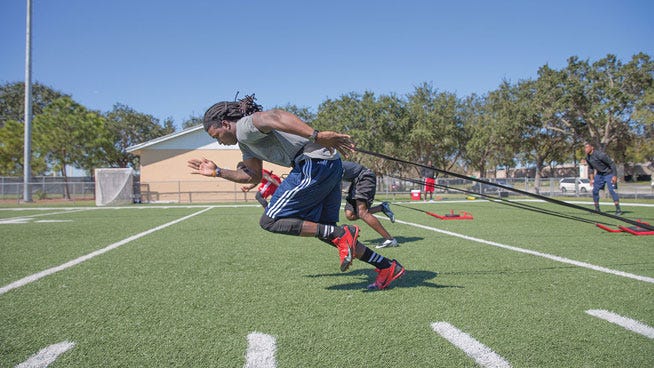Does resisted sled training (RST) improve sprint speed and, if so, what's the ideal training protocol?
Research reviewed: The Effectiveness of Resisted Sled Training (RST) for Sprint Performance: A Systematic Review and Meta-analysis (Alcaraz et al, Journal of Sports Medicine 2018)
Resisted sled training (RST) is commonly used within the athletic population because it’s believed to improve sprint speed.

However, that brings up two key questions:
Does RST actually improve sprint speeds?
If so, what’s the best protocol?
Today’s paper - The Effectiveness of Resisted Sled Training (RST) for Sprint Performance: A Systematic Review and Meta-analysis (Alcaraz et al, Journal of Sports Medicine 2018) - looked to answer those questions.

The Methods
The researchers sorted through 2376 studies and boiled them down to 13 after filtering for strict inclusion criteria, primarily to root out bias and poor study design.

The key takeaways
The researchers found that resisted sled training significantly improved sprint speed during the acceleration phase, mildly improved sprint speed when performing sprints greater than 20m, but had no significant impact on improving top speed (max velocity phase). Further, there’s no evidence that RST is more effective than unresisted sprint training.
Additionally, there was no evidence that RST with overload (loading the sled with more than 20% body mass weight) led to increased sprint performance and may actually cause changes in gait mechanics. Therefore, the recommendation from the authors was never to load a sled more than 20% of the trainee’s body mass.
Lastly, the researchers found that the ideal training plan for RST is 2-3 days per week on a rigid surface, with greater than 160m covered per session, and for greater than six weeks, at minimum.



